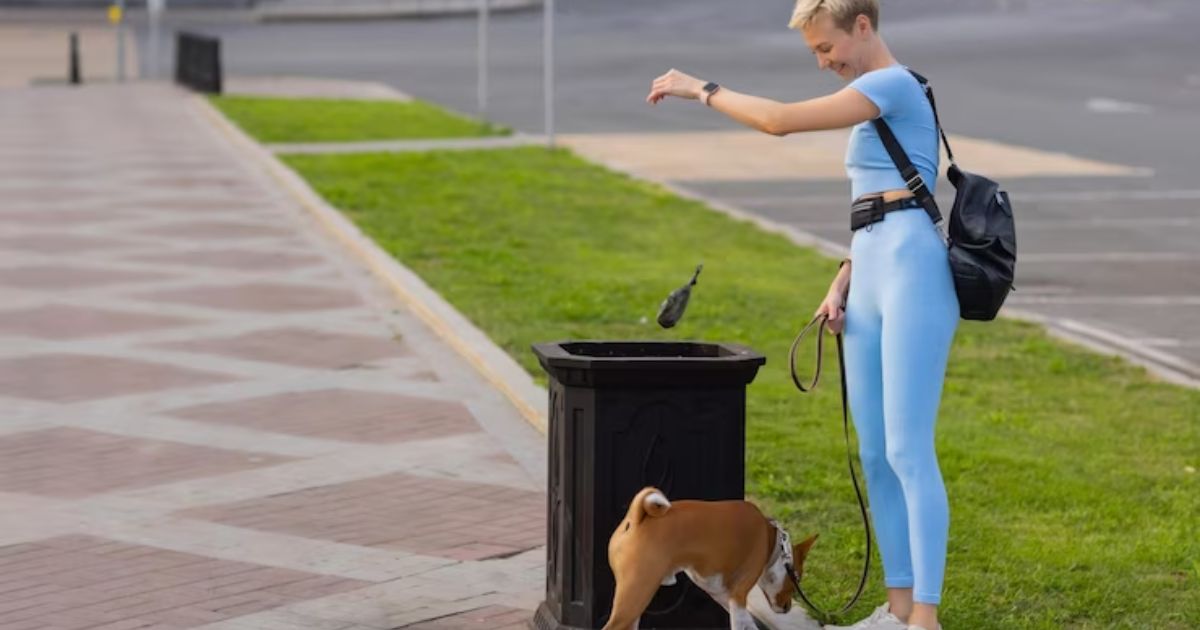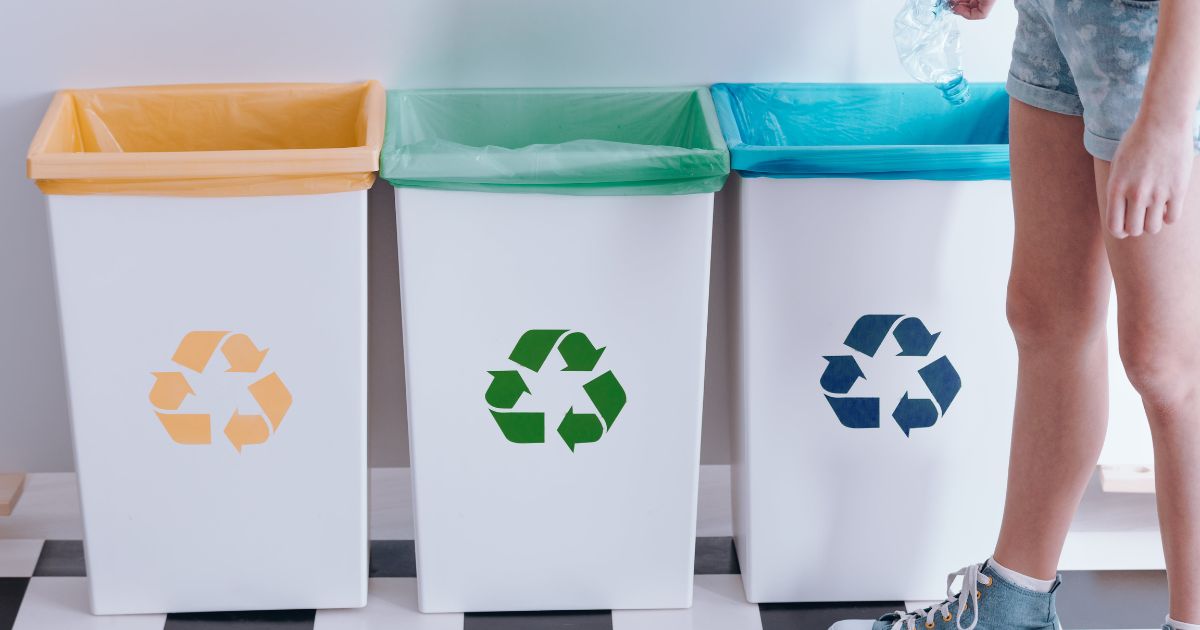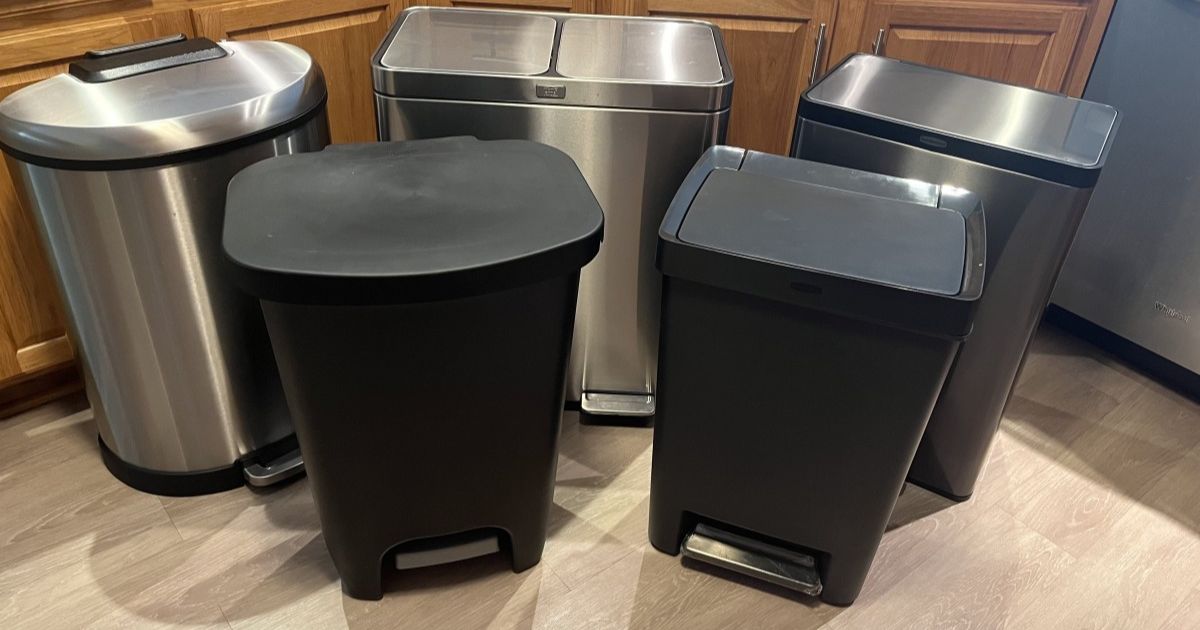Key Takeaways
- Environmental modifications, such as securing the trash can with a tight-fitting lid or placing it in a locked cabinet, can prevent dogs from accessing it.
- Providing dogs with engaging toys and regular exercise can help alleviate boredom and reduce their desire to explore the trash.
- Consistency is key in setting boundaries and reinforcing them through positive reinforcement techniques.
- Using a trash bin with a secure lid, placing it in a secure location, and employing deterrents and repellents can help keep dogs out of the trash.
Understanding the Root Cause
To effectively address the issue of dogs getting into the trash, it is crucial to first understand the underlying reasons behind this behavior. Dogs are naturally curious animals, and their scavenging behavior stems from their instinct to search for food. Additionally, some dogs may exhibit this behavior due to boredom or a lack of mental stimulation. By understanding these behaviors, we can take appropriate measures to prevent dogs from accessing the trash.
Environmental modifications play a key role in addressing this issue. For instance, securing the trash can with a tight-fitting lid or placing it in a locked cabinet can prevent dogs from accessing it. Providing dogs with engaging toys and regular exercise can also help alleviate boredom, reducing their desire to explore the trash. By making these simple changes, we can effectively keep dogs out of the trash and create a safer and cleaner environment for both our pets and ourselves.
Establishing Clear Boundaries
In order to prevent dogs from accessing the trash, it is important to establish clear boundaries using consistent training techniques. By setting boundaries, you can effectively communicate to your dog what is acceptable behavior and what is not. Here are four training techniques to help you establish clear boundaries:
- Consistency: Be consistent in your approach and expectations. Dogs learn through repetition, so make sure to consistently reinforce the boundaries you have set.
- Positive reinforcement: Use positive reinforcement techniques, such as rewards and praise, to encourage your dog to follow the established boundaries.
- Redirecting attention: Provide your dog with alternative activities or toys to redirect their attention away from the trash and towards more appropriate behavior.
- Supervision: Supervise your dog when they are near the trash to intervene immediately if they attempt to access it.
Securing the Trash Bin
To prevent dogs from accessing the trash, it is essential to secure the trash bin properly. Understanding behavioral triggers and managing food waste can help in effectively securing the trash bin. Dogs are often attracted to the smell of food waste, so it is crucial to manage this properly. One solution is to use a trash bin with a secure lid that cannot be easily opened by the dog.
Some bins come with lockable lids or even sensor-based lids that only open when activated by human touch. Placing the trash bin in a secure location, such as a locked cabinet or a fenced area, can further prevent dogs from reaching it. By implementing these solutions, dog owners can successfully keep their pets out of the trash and maintain a clean and safe environment.
Using Deterrents and Repellents
When it comes to keeping dogs out of the trash, there are two main points to consider: effective trash can covers and natural repellent options. Using a sturdy and secure trash can cover can help prevent dogs from accessing the contents of the trash bin. Additionally, there are natural repellents available that can deter dogs from going near the trash, such as citrus peels or vinegar. By implementing these deterrents and repellents, you can effectively keep your dog out of the trash.
Effective Trash Can Covers
By utilizing deterrents and repellents, dog owners can effectively prevent their pets from accessing the trash by using appropriate trash can covers. These covers not only serve as a physical barrier but also provide a solution to managing food waste and avoiding potential health hazards. Here are four effective trash can covers that will help keep your dog out of the trash:
- Locking lids: These covers have a secure locking mechanism that prevents dogs from opening the trash can.
- Weighted covers: These covers are designed to be heavy, making it difficult for dogs to knock them over or lift them.
- Motion-activated covers: These covers use sensors to detect movement and automatically close when a dog approaches, deterring them from accessing the trash.
- Scented covers: These covers are infused with scents that dogs find repulsive, discouraging them from going near the trash can.
Natural Repellent Options
Continuing the discussion on effective trash can covers, dog owners can further prevent their pets from accessing the trash by exploring natural repellent options. These natural repellent alternatives are not only safe for dogs but also environmentally friendly. One homemade deterrent is using citrus peels or vinegar. Dogs dislike the strong smell of these substances and will be discouraged from going near the trash. Another option is using cayenne pepper or chili powder.
Sprinkling these spices on top of the trash or around the trash can will create a strong smell that dogs find unpleasant. Additionally, some dog owners have found success with using essential oils such as lavender or peppermint. These scents can be sprayed around the trash area to deter dogs. By utilizing these natural repellents, dog owners can create a trash environment that is unappealing to their pets, ultimately keeping their homes clean and their dogs safe.
Implementing Training Techniques
When it comes to keeping your dog out of the trash, implementing effective training methods is key. Positive reinforcement techniques, such as rewarding your dog with treats or praise when they avoid the trash, can help to reinforce good behavior. Consistency and patience are essential in training your dog to stay away from the trash, so be sure to dedicate time and effort into teaching them the appropriate behavior.
Effective Training Methods
What are the most effective training methods to implement when teaching your dog to stay out of the trash?
- Effective Reward-Based Techniques: Positive reinforcement is key when training your dog. Reward them with treats, praise, or playtime when they display desirable behavior, such as staying away from the trash.
- Desensitization Techniques: Gradually expose your dog to the trash, starting from a distance and gradually moving closer. Use treats and positive reinforcement to associate the trash with something positive, helping them overcome their curiosity.
- Consistency: Establish clear rules and consistently enforce them. Dogs thrive on routine, so make sure to consistently reinforce the training methods to ensure long-term success.
- Redirecting: Provide your dog with an alternative and appropriate outlet for their energy, such as interactive toys or puzzle feeders. This helps redirect their attention away from the trash and onto a more desirable behavior.
Positive Reinforcement Techniques
To effectively train your dog to stay out of the trash, consistently utilize positive reinforcement techniques. Understanding canine behavior is key to successfully implementing positive reinforcement training. Dogs are naturally drawn to the smell and texture of garbage, so it’s important to provide them with an alternative and reward them for making the right choices.
Positive reinforcement involves rewarding desired behaviors, such as staying away from the trash, with praise, treats, or playtime. This method focuses on encouraging good behavior rather than punishing bad behavior. By consistently rewarding your dog for staying out of the trash, they will learn that this behavior is desirable and will be more likely to repeat it in the future.
Here is a table outlining some effective positive reinforcement techniques:
| Technique | Description |
|---|---|
| Treat rewards | Give your dog a treat when they choose to ignore the trash. Make sure the treats are high-value and only given when they exhibit the desired behavior. |
| Verbal praise | Use a positive, enthusiastic tone of voice to praise your dog when they stay away from the trash. Dogs respond well to verbal approval and will be more likely to repeat the behavior. |
| Interactive play | Engage your dog in a fun game or play session when they avoid the trash. This not only rewards them for their good behavior but also redirects their attention to a more appropriate activity. |
| Clicker training | Incorporate a clicker into the training process. Click and treat your dog when they make the right choice and stay away from the trash. The clicker serves as a signal that they have done something good. |
Providing Alternative Distractions
One effective method for preventing dogs from getting into the trash is by offering a variety of engaging toys and activities as alternative distractions. This not only redirects their attention away from the trash, but also provides mental and physical stimulation for them. Here are four types of distraction toys and puzzle feeders that can help keep your dog entertained and away from the trash:
- Treat-dispensing toys: These toys require the dog to work for their treats, keeping them engaged and occupied for longer periods of time.
- Interactive puzzle feeders: These feeders make dogs work for their food by solving puzzles or manipulating different parts of the feeder.
- Chew toys: Providing your dog with durable chew toys can help redirect their chewing behavior away from the trash.
- Interactive toys: Toys that make noise or move unpredictably can keep your dog engaged and entertained, reducing their desire to explore the trash.
Consistency in Reinforcement
Consistency in reinforcement is crucial when training your dog to stay out of the trash. By consistently using the same training techniques, such as positive reinforcement or redirection, you can reinforce the desired behavior and discourage unwanted behaviors. It is also important to set clear boundaries and consistently enforce them, so your dog understands what is expected of them.
Training Techniques for Consistency
Using consistent reinforcement techniques is crucial in training dogs to stay away from the trash. Here are some practical training techniques that can help you achieve consistency in your dog’s behavior:
- Positive reinforcement: Reward your dog with treats, praise, and affection when they exhibit desired behaviors, such as staying away from the trash. This will motivate them to repeat those behaviors in the future.
- Consistent commands: Use clear and consistent commands, such as “leave it” or “stay,” to communicate your expectations to your dog. Repeat these commands consistently during training sessions and in real-life situations.
- Crate training: Crate training can be an effective way to prevent your puppy from accessing the trash when you’re not around. Make the crate a positive and comfortable space, and gradually increase the duration of time they spend in the crate.
- Environmental management: Minimize your dog’s access to the trash by using baby gates, closing doors, or using trash cans with secure lids. This will help reinforce the training and prevent any setbacks.
Setting Clear Boundaries
To maintain a consistent approach in teaching your dog to stay away from the trash, it is important to establish clear boundaries for their behavior. Understanding canine behavior is crucial in setting these boundaries effectively. Dogs have a natural curiosity and may be attracted to the smells and textures of the trash. Using positive reinforcement techniques can help reinforce the desired behavior of staying away from the trash. By consistently rewarding your dog for staying away from the trash and redirecting their attention to appropriate activities, you can help them understand that the trash is off-limits.
Here is a table that outlines some practical ways to set clear boundaries:
| Boundary Setting Techniques | Description |
|---|---|
| Use baby gates or closed doors to restrict access to the trash area | Prevent your dog from reaching the trash by physically blocking their access. |
| Train your dog to stay in designated areas | Teach your dog to stay in specific areas of the house where the trash is not accessible. |
| Provide alternative activities and toys | Keep your dog engaged and mentally stimulated by offering them toys and activities that are more rewarding than exploring the trash. |
| Use verbal cues and commands | Teach your dog specific commands such as “leave it” or “stay” to help them understand what behavior is expected around the trash. |
| Be consistent in reinforcement | Reward your dog consistently for good behavior and redirect them away from the trash each time they approach it. |
Supervision and Monitoring
One effective method for preventing dogs from getting into the trash is by closely monitoring them during meal times. By being present and attentive, you can ensure that your dog does not have the opportunity to indulge in their trash-diving habit. Here are four practical tips to help you supervise and monitor your dog effectively:
- Create a designated feeding area: Set up a specific spot for your dog to eat, away from the trash. This will help them associate meal times with their designated area, reducing the temptation to explore the garbage.
- Use positive reinforcement training: Reward your dog with treats or praise when they stay away from the trash during meals. This positive reinforcement will reinforce good behavior and further discourage them from seeking out the trash.
- Keep the trash out of reach: Store your trash in a secure location or invest in a dog-proof trash can. This will physically prevent your dog from accessing the trash and reduce the need for constant monitoring.
- Establish a routine: Dogs thrive on routine, so establish set meal times and stick to them. By creating a predictable schedule, your dog will anticipate their meals and be less likely to search for alternative food sources.
Utilizing Technology
Technology can be a valuable tool in preventing dogs from accessing the trash. One effective way to utilize automation and technology is by using smart trash bins. These bins are equipped with sensors that can detect when a dog is near and activate a mechanism to secure the lid, preventing the dog from getting into the trash. Smart trash bins can also be programmed to send alerts or notifications to the owner’s phone, providing real-time updates on any dog-related incidents.
Some smart trash bins have built-in cameras that can capture images or videos of the dog attempting to access the trash, which can be useful for further monitoring and training purposes. By incorporating these advanced technological solutions, dog owners can have peace of mind knowing that their pets are kept safe and away from the trash.
Seeking Professional Help
When facing difficulties in keeping a dog out of the trash, seeking professional assistance can be a beneficial option. Professional guidance can provide effective strategies and personalized solutions to address the issue. Here are four reasons why seeking experts can help:
- Expertise: Professionals have extensive knowledge and experience in dealing with dog behavior problems. They can accurately assess the situation and provide tailored advice based on your specific needs.
- Training Techniques: Professionals can teach you effective training techniques to prevent your dog from accessing the trash. They can guide you on using positive reinforcement, redirection, and other proven methods to modify your dog’s behavior.
- Behavior Modification: Seeking professional help allows for a comprehensive assessment of your dog’s behavior. Experts can identify any underlying issues contributing to the trash-seeking behavior and develop a behavior modification plan to address them.
- Support and Accountability: Professionals offer ongoing support and guidance throughout the training process. They can provide reassurance, answer your questions, and hold you accountable for implementing the recommended strategies.
FAQ,s
Can I Use a Baby Gate to Keep My Dog Out of the Kitchen Where the Trash Bin Is Located?
Yes, a baby gate can be an effective way to keep your dog out of the kitchen. However, there are alternative methods such as using a trash can with a secure lid or training your dog to stay out of the kitchen area.
How Long Does It Usually Take for a Dog to Learn Not to Go Near the Trash Bin?
Teaching dogs to stay away from trash bins requires consistency, positive reinforcement, and providing alternative outlets for their natural instincts. Preventing rummaging through trash involves secure containers, keeping trash bins out of reach, and supervising the dog’s access to the area.
Are There Any Specific Types of Trash Bins That Are More Effective in Deterring Dogs?
When it comes to keeping dogs away from trash bins, certain types of bins can be more effective deterrents. Implementing secure latching mechanisms, heavy-duty materials, and odor-resistant features are practical methods for ensuring success.
Can I Use a Shock Collar to Train My Dog Not to Go Near the Trash?
Using positive reinforcement techniques, such as reward-based training, is recommended to teach dogs not to go near the trash. In addition, implementing management strategies like using a secure trash can or moving it to an inaccessible location can be effective.
Is It Necessary to Remove All Food Smells From the Trash Before Securing It?
It is essential to remove food smells from the trash before securing it to effectively keep dogs out. This can be achieved by double bagging, using odor-blocking trash bags, or storing the trash in a secure container.
Conclusion
In conclusion, preventing dogs from getting into the trash requires understanding the root cause, establishing clear boundaries, securing the trash bin, using deterrents and repellents, implementing training techniques, consistency in reinforcement, supervision and monitoring, utilizing technology, and seeking professional help if needed. For example, in a case study, a dog owner successfully trained their dog to avoid the trash by consistently reinforcing the command to “leave it,” using a secure trash bin, and providing alternative activities to keep the dog engaged. By following these practical solutions, dog owners can effectively keep their dogs out of the trash.










